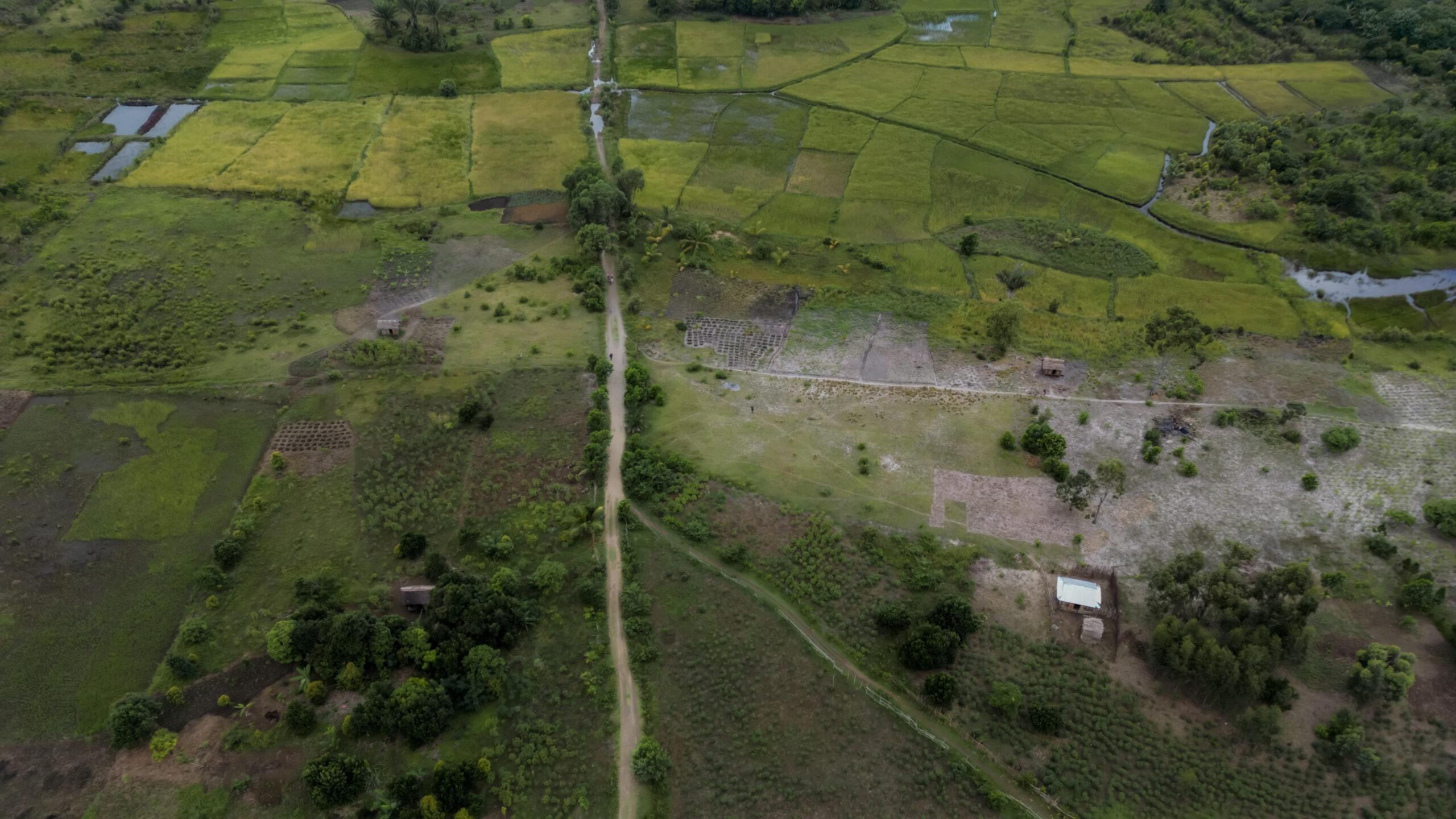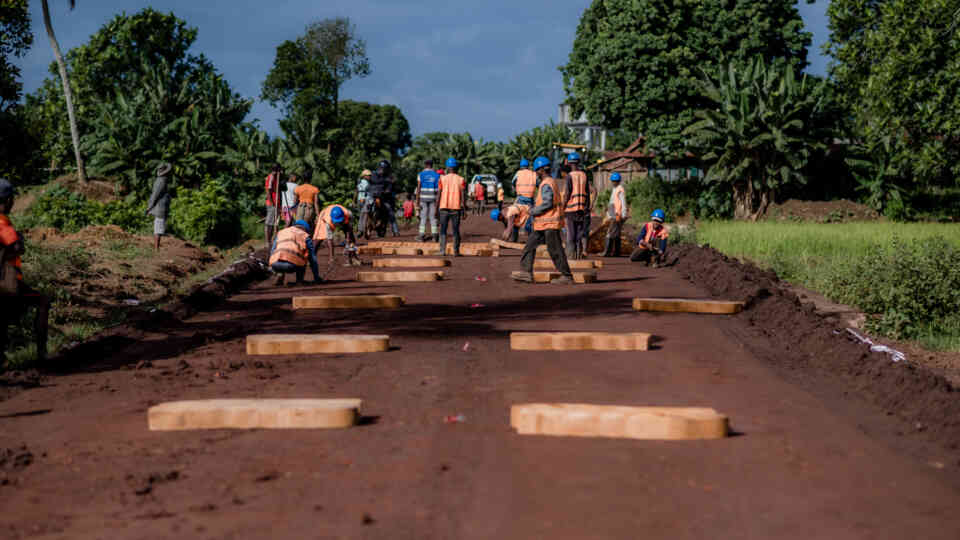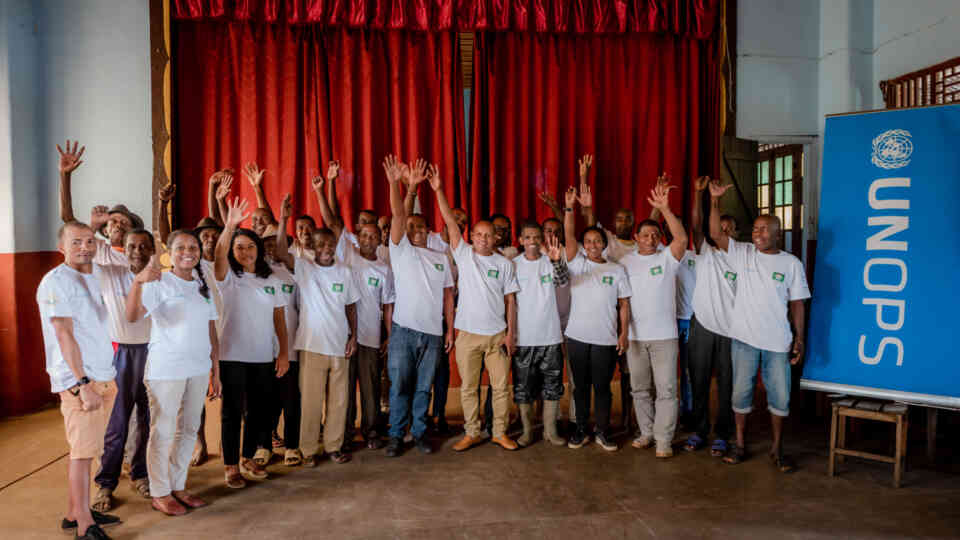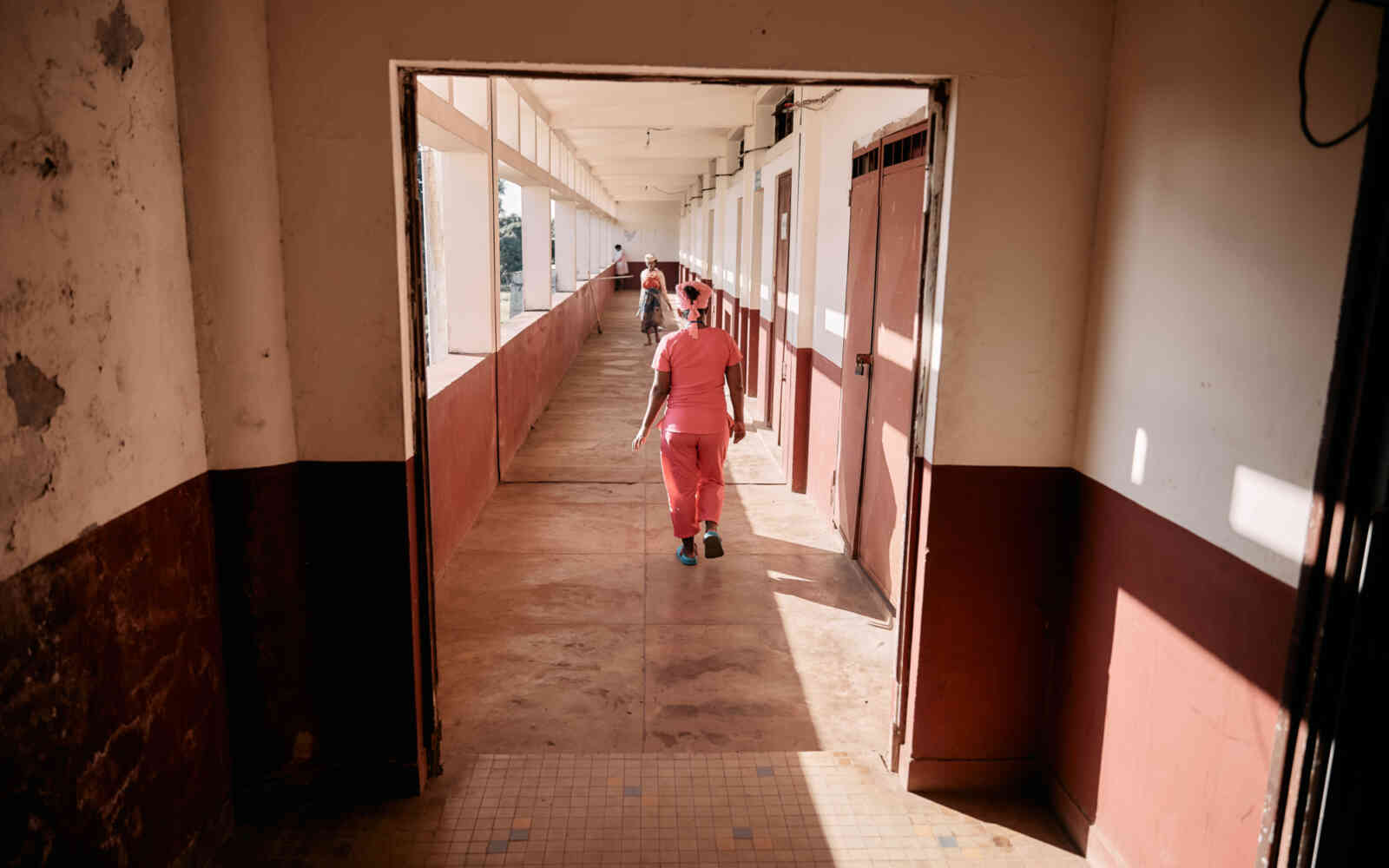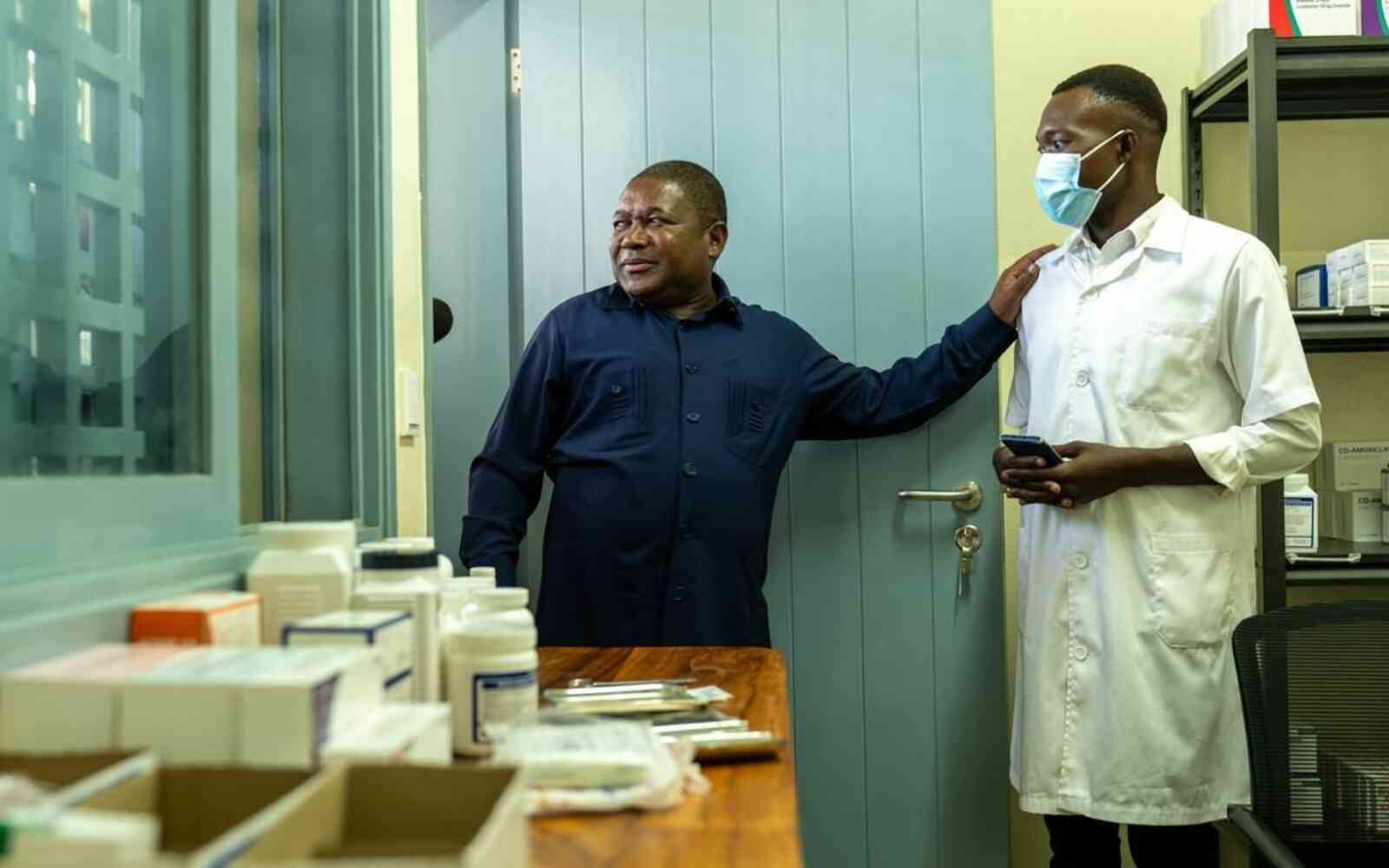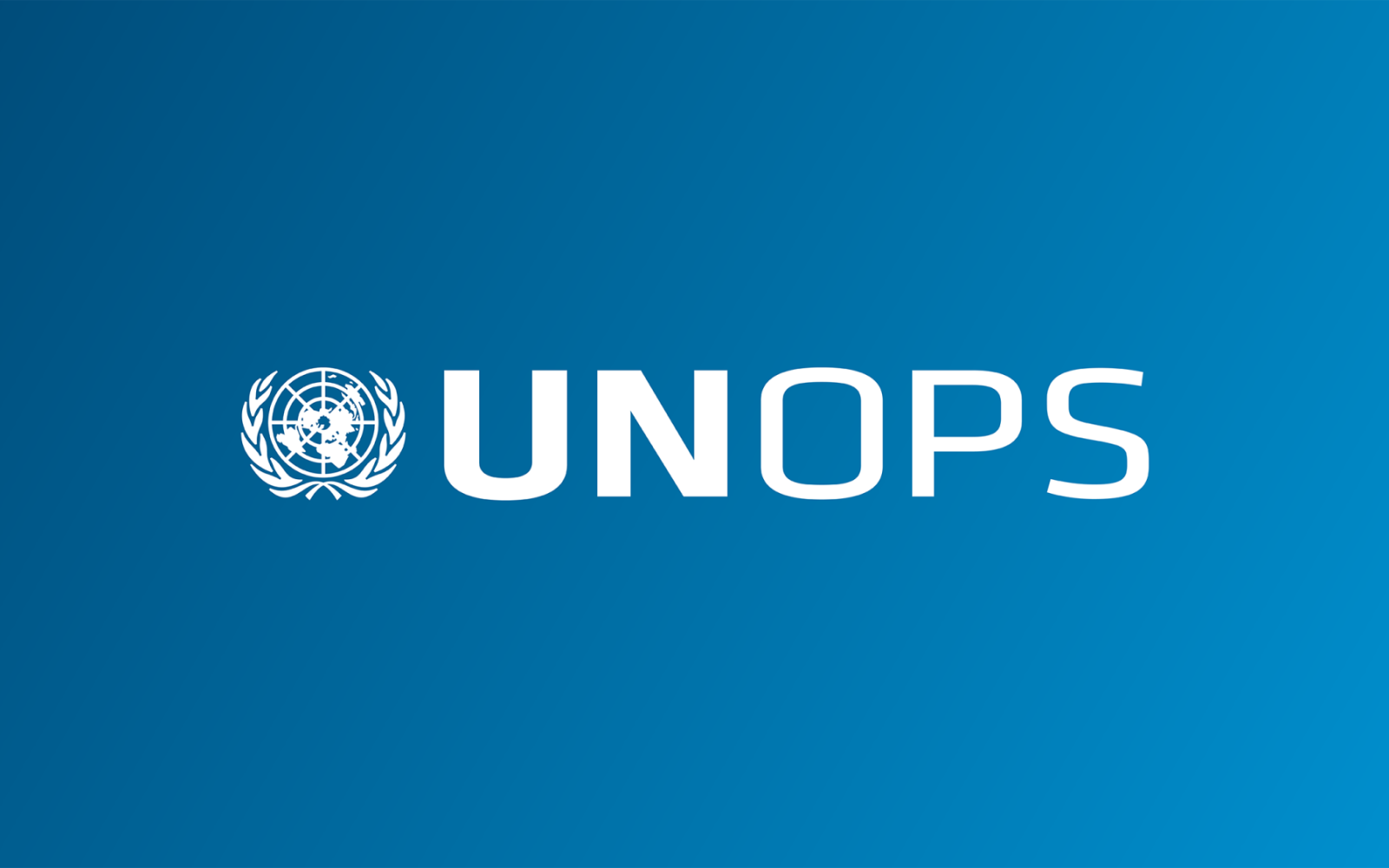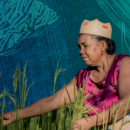The United Nations Office for Project Services (UNOPS)

Transforming life in rural Madagascar
New roads and solar-powered pumping stations are breathing new life into rural communities in southern Madagascar.
In Madagascar, over 80 per cent of the population lives on agriculture. But in some areas of the country, farmers face struggles getting sufficient water for crops while difficult road conditions make it hard to transport goods and access services.
Combined, both problems hamper socio-economic development.
The Inclusive Agricultural Value Chains Development Programme – which UNOPS is implementing in collaboration with the government of Madagascar in two rural regions, with financing from the International Fund for Agricultural Development – is addressing these issues to jumpstart agricultural development.
Bad weather no longer means bad access
For people living in some rural communes in southeast Madagascar, getting from one point to another is no easy task.
Before, it took hours for people to travel between Ambila, a rural area in the Fitovinany Region, and Manakara, the capital of the region.
Residents of Anosivelo, a rural area of Atsimo Atsinanana Region, faced similar challenges.
"No vehicles could circulate, even motorcycles. We walk on foot, in the mud, even in the dry season," says Christine Baojonasy, who lives in Anosivelo.
In collaboration with the government of Madagascar, UNOPS has rehabilitated roads in the Fitovinany and Atsimo Atsinanana Regions as part of the programme.
Using geocell technology – introduced for the first time in Madagascar – rehabilitated roads that are resistant to adverse weather conditions are now making it easier for people living in places like Ambila and Anosivelo to travel.
"Intense rainfall puts a severe strain on rural roads," says Yerima Bodi, an infrastructure project manager for UNOPS in Madagascar. "Using geocell technology, we can now build infrastructure that is more durable, more resistant and adapted to the needs of local communities."




Today, the rehabilitated 2-kilometre road is providing an easier path for people living in even the most isolated areas to access goods, services and markets. A resident of Ambila, Ony Iaban'i Doma witnessed the struggle of community members, including pregnant women, to get to the healthcare facility before the road was rehabilitated.
"With this new road, we can transport our goods in complete safety. Even when it rains, the road remains intact. Now, motorcycles and vehicles can travel without fear," says Ony.
And a 15-kilometre road between Anosivelo and Vohipeno, another rural community in the Fitovinany Region, will further increase access for local communities.
Water powered by the sun
Once fed by an old pumping station that has fallen into disrepair, the canals farmers in Madagascar's Atsimo Atsinanana Region depend on have dried up – and crop production remains insufficient for the community.
"We barely produce four to five bags per rice plot per season," says Barthélemy Ramahandrisoa, who lives in Vohimasina, Vohipeno District.
As part of the same programme, seven solar-powered pumping stations – a first in Madagascar – are being constructed to help change this.
The solar-powered pumping station – the largest pumping station ever built in Madagascar – serving Vohipeno and Ivato Districts alone will make it possible to irrigate more than 2,440 hectares of crops, helping nearly 10,000 households double their harvest and strengthening their food security.
"It's been over 30 years since our old station was shut down. Now we finally have water to feed our fields," says Randrianandrasana, a member of the Ivato community.




"With the arrival of water thanks to this infrastructure, we hope to harvest up to twenty bags of rice per rice field," says Barthélemy Ramahandrisoa.
In Vohipeno District, the mayor looks to a future of multiplying harvests, lengthening seasons and increasing access to water from the solar pumping stations for surrounding villages. "We hope to multiply harvests by up to ten times what we have today," says Mayor Berson Gobelle.
About the programme
The Inclusive Agricultural Value Chains Development Programme aims to improve income and food security for 320,000 farming households in nine regions in southern Madagascar: Amoron'i Mania, Androy, Anosy, Atsimo Andrefana, Atsimo Atsinanana, Fitovinany, Haute Matsiatra, Ihorombe and Vatovavy.
In collaboration with the government of Madagascar, UNOPS is implementing the programme in two regions – Atsimo Atsinanana and Fitovinany – with financing from the International Fund for Agricultural Development.







